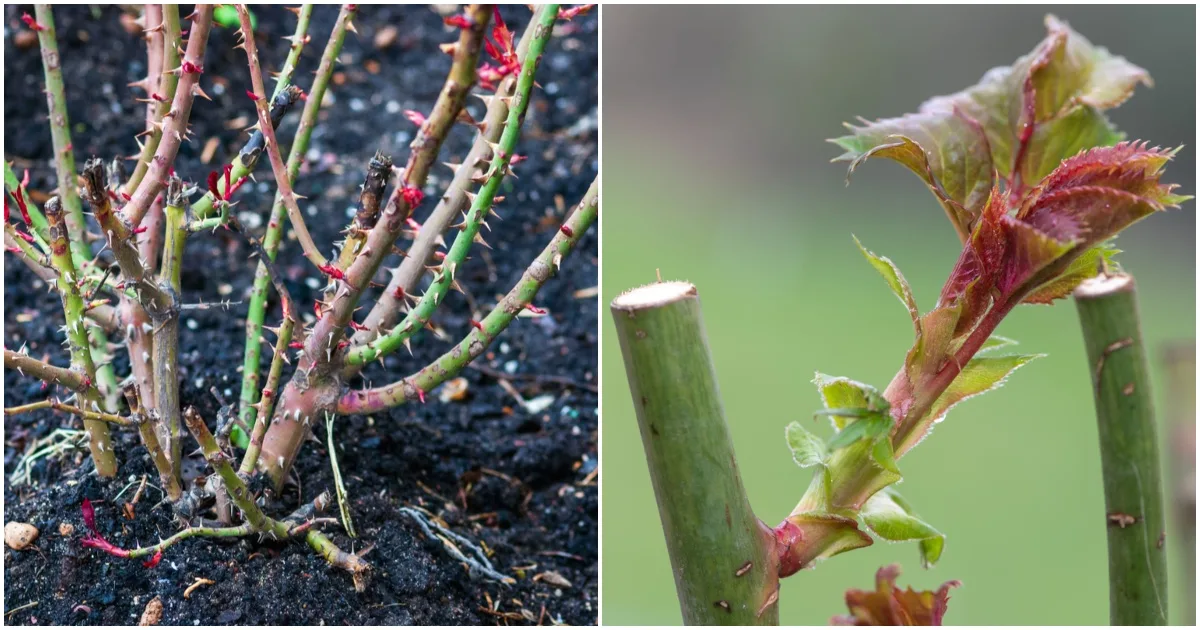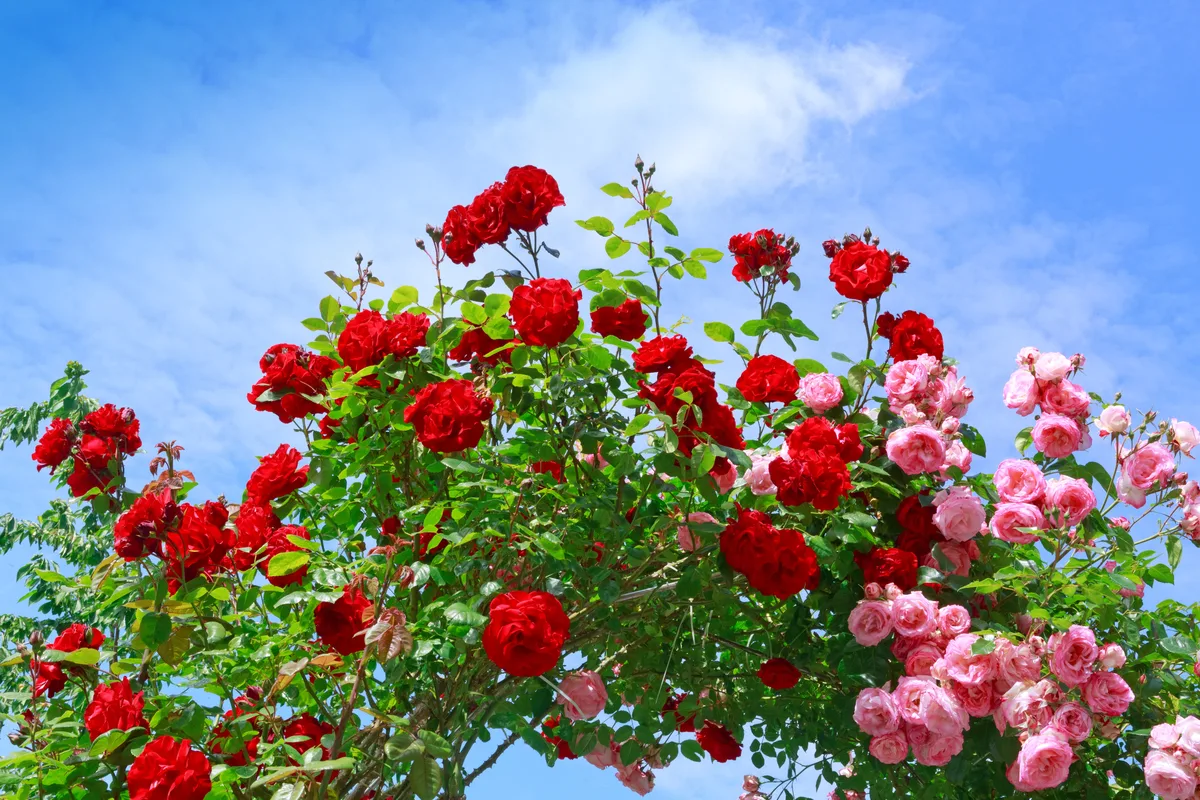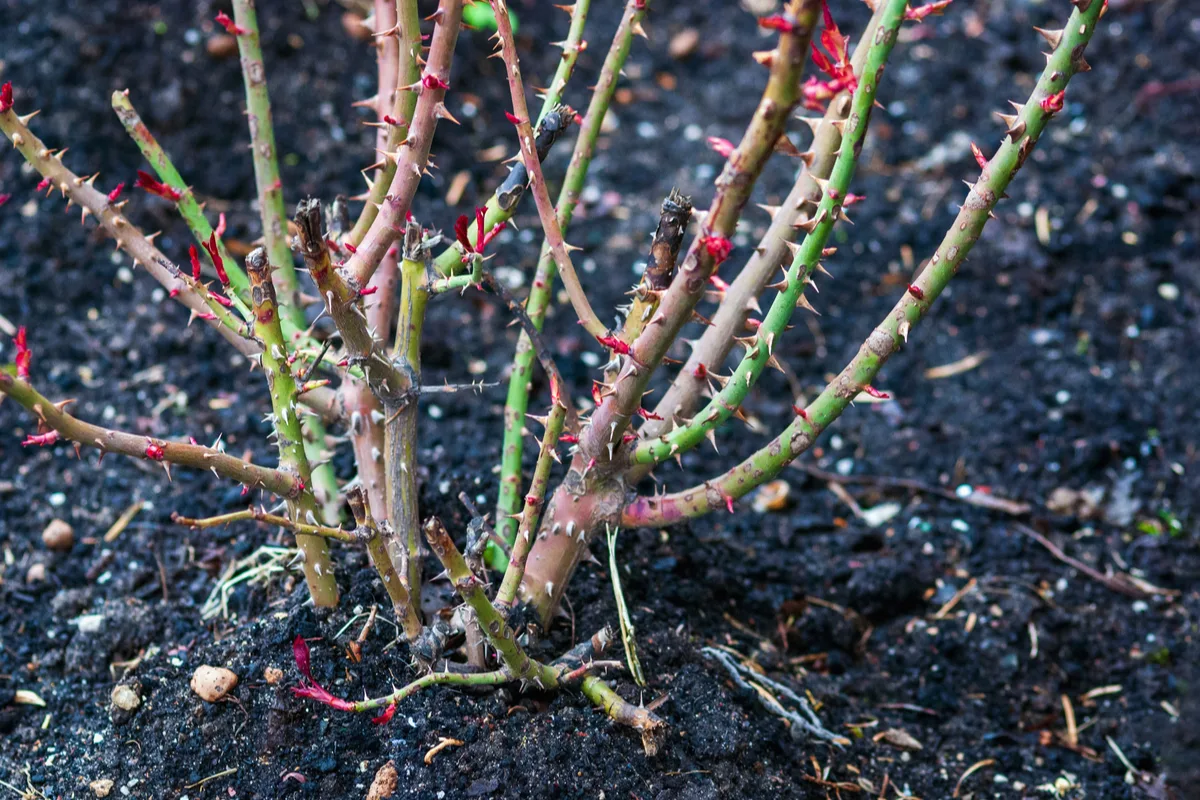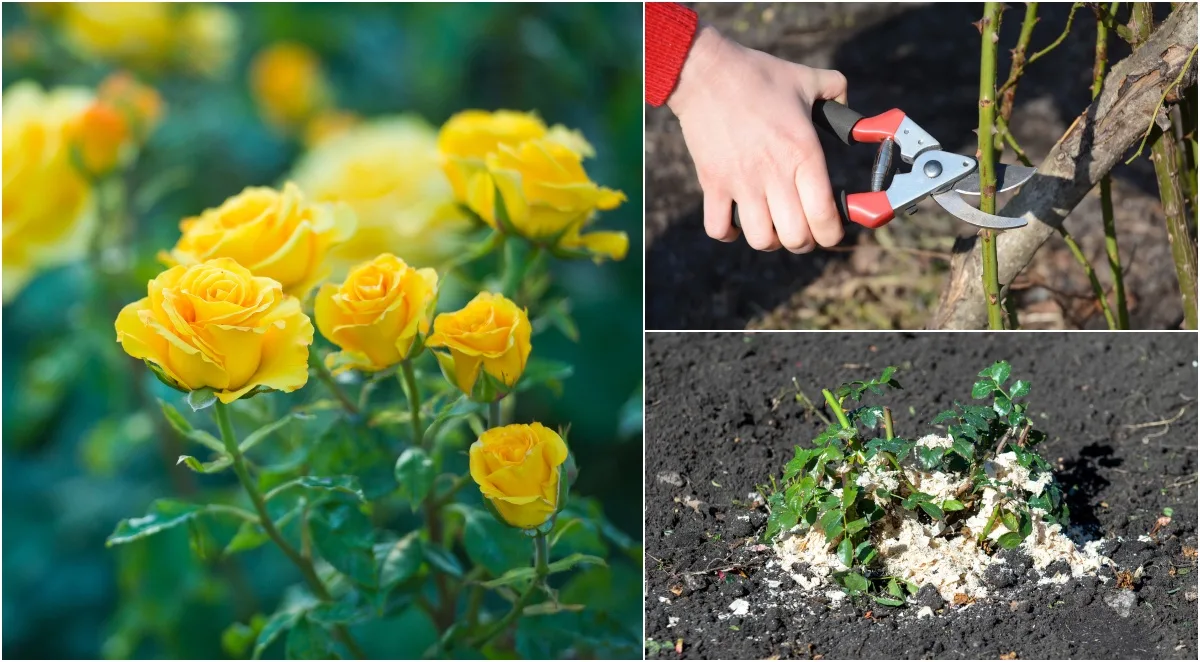
For a spectacular season of phenomenal roses, undertake these essential spring rose care jobs.
Among my favorite spring chores is getting roses ready for their magnificent flower show.

When the forsythias and azaleas are blooming, and spring bulbs are bursting, it’s a perfect time to prepare our roses for the show-stopping summer blooms to come.

Is there anything more exciting than the first signs of new growth on our rose bushes?

Now’s the time to ensure a spectacular summer ahead full of rose bushes overflowing with burgeoning blossoms.
5 Essential Spring Jobs for Every Rose Grower
1. Clean & Tidy
Once the weather is favorable, gently remove winter protection from your roses.
Tender rose canes buried in mulch, leaves, or soil can gently be excavated.

To prevent rose diseases and pests, take away dead leaves and debris that may harbor insect larvae or soil-borne diseases.

2. Prune
Spring is the best time for pruning most kinds of roses except those that bloom on second-year wood.
At the very least, remove dead or broken branches.

Vigorous shrubs need exceptional air circulation.
Spring is an excellent time to remove the top 1/3rd or half of vigorous, hardy shrubs.

This will expose strong wood for the plant’s best new growth, and importantly, blooming branches.

Prune to create an open center, removing small, weak canes.
Pruning roses is not as simple as some make it out to be. It all depends on the type of roses you grow. Here’s our no nonsense guide to pruning roses in spring for you to follow along.
3. Feed and Mulch
Spring is a great time to revitalize your roses’ soil.
Choose organic-based fertilizers and high-quality mulches for the best results. Well-rotted compost will help feed your roses and add to your soil health.

For extra nutrition, try adding Epsom salt, eggshells, worm castings, compost tea, or alfalfa meal.
Using a clean mulch aids pest and disease prevention, retains moisture, and looks great under your roses.

For more information on feeding and caring for roses, check out How to Fertilize Roses.
Also see Rose Plant Companions, for more ideas to keep your roses happy and healthy!

4. Plant More Roses
Spring is the perfect time to plant new rose varieties. When selecting new rose varieties for your rose garden be sure to consider:
- Your local growing climate and conditions
- The roses’ size and growth habit and how it fits into your garden and landscape
- Maintenance needs
- Bloom times, color, fragrance, and flower variations

Incredible selections of roses are available through many nurseries and special-order growers.
These include David Austin Roses, High Country Roses, and Rogue Valley Roses.

5. Propagate Your Roses
After all that pruning, what to do with the cuttings?
It should be noted, that composting rose branches is not a good idea as they can harbor pests and diseases.
Strategically placed, however, thorny rose branches can be a great slug and snail deterrent.
Spring is also a fantastic time to propagate new rose bushes, an incredible use for those rose bush cuttings.

For details on propagating roses see our article, How to Propagate Roses From Cuttings.
Spring Rose Care Jobs by Rose Type
How we put our roses to bed for the winter will inevitably determine many of our spring rose care routines.
Climbing Roses
Spring is the time to build or reinforce trellises, arbors, and structures for your climbing roses.

To protect climbing roses from winter weather, vines of tender rose varieties are laid on the ground and buried under mulch, straw, leaves, or soil.

In spring, gently uncover climbing rose vines and reattach them to their structures.
Whether protected or left in place through the offseason, prune and train your rose vines in spring.

Hardy Roses
Hardy shrub roses love a good cleaning and pruning in spring to ensure excellent airflow and access to flower-forming sunshine.

Tender Roses
In cold climates, precious tender roses need a gentle wake-up to acclimatize to spring’s fluctuating temperatures.

Tender roses are often grown from grafting. Moreover, the graft site may need special winter protection in some climates.

Gently excavating the rose graft ensures new growth comes from above the graft. Growth from below the graft, known as suckers, will grow the rootstock rose. Notably, these roses won’t bloom true to the chosen rose cultivar.
Reblooming Roses
Reblooming roses, like shrub roses, thrive with hard pruning.

Remove about the top 1/3rd of the plant along with damaged or diseased wood.
Roses That Bloom on Second-Year Wood
Caution must be taken when pruning roses that bloom on second-year wood.
To leave the bounty of blooms on these roses, only remove damaged or diseased plant parts in spring.
Final Thoughts
Spring is perhaps the most important season when it comes to preparing our roses for what’s to come. Complete the above steps and sit back and enjoy their delightful, stunning flower show this summer.

